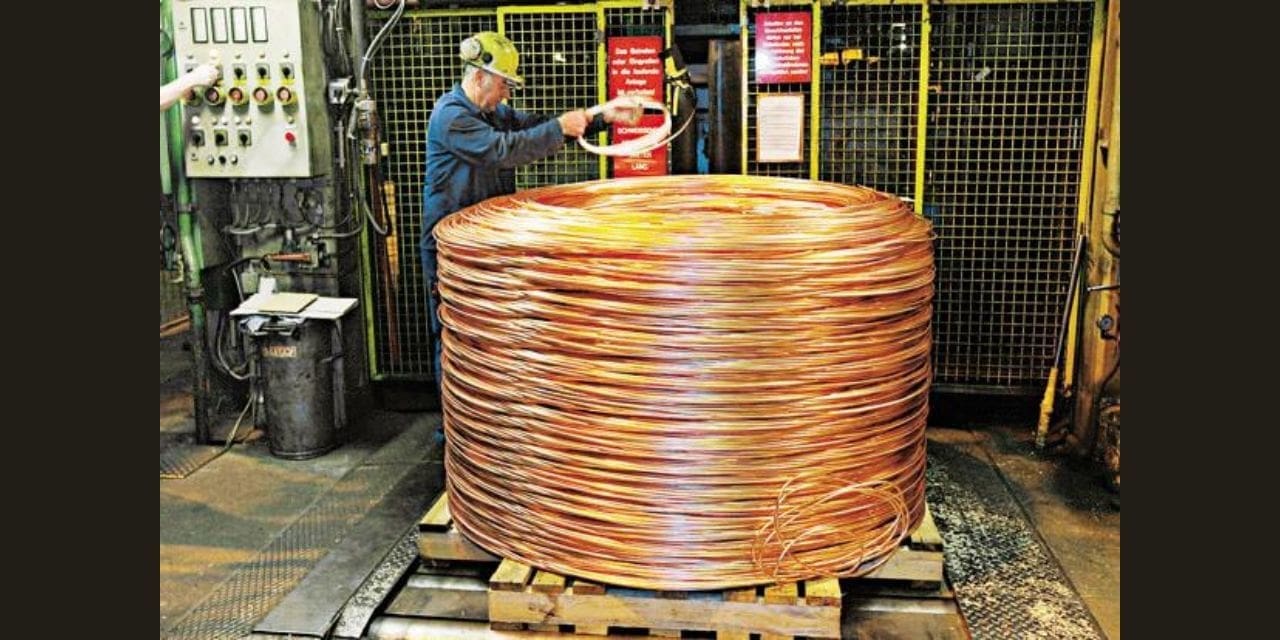New Delhi, Delhi, India
The International Copper Association India (ICA India) recently launched the Copper Stock and Flow Model that emphasizes the pivotal role of quality of scrap processing as 70% of copper is used for electrical applications, urging immediate action for improved responsible recycling practices. The model highlights the gap between global practices of refining scrap copper as compared to almost 100% remelting of scrap in India.
As per the findings, almost 38% of India’s copper demand is met through scrap copper. In the fiscal year 2021, India generated almost 350 KT (kilo tonne) of end-of-life and process copper scrap, supplemented by the import of an additional 80 KT of copper scrap.
Most of the remelted copper is used in the form of rods and billets concentrated in the electrical and electronics segment. The recycling process must focus on refining high-grade scrap and smelting & refining low-grade scrap to eliminate impurities. However, the share of secondary smelting and refining of scrap in India remains at a mere 1%, significantly trailing behind leading economies such as China (32%), the EU (30%) and Japan (16%).
Presently, India primarily relies on the direct melting of scrap, resulting in variable copper purity due to the use of diverse scrap types. Traditional methods are employed to reduce impurities, producing copper rods or billets that are non-compliant with the national standard. The Indian Copper Stock and Flow model indicated that a significant portion of direct melt copper scrap goes into semis production. This percentage is notably higher compared to key global economies, with Japan, the EU, or China.
The direct remelting of copper in semis fabrication raises quality concerns, especially regarding tramp elements (elements that cannot be removed easily by the direct remelting process) in conductor applications. ETP grade copper, with a required purity of 99.9% or more as per IS12444 standards, is crucial for all electrical installations.
Mr. Shreegopal Kabra, MD & Group President, RR Global said, “Poor-quality wires and cables contribute to the high rate of building fires and electrocutions in India, leading to nearly 14 deaths daily. The widespread copper quality and insulation issues resulting from the direct melting of scrap, particularly in wire and cable production, greatly affect the end users and market stakeholders. This situation calls for stricter regulations and quality control measures to uphold fire safety standards and ensure the reliability of copper products.”
ICA India’s study on building wire samples across India validated the issue of poor quality of scrap copper. The study highlighted that 26% of the samples failed the conductor test as prescribed by IS164. Notably, all failures were associated with products from local brands of non-listed companies, revealing a direct correlation to the sourcing of poor-quality copper rods.
This alarming trend underscores the urgent need for investment in secondary smelting & refining of scrap processing in India to align the quality with ETP copper standards. India has done well to create an efficient collection rate of copper scrap, however, the processing of copper scrap needs a larger focus and a shift from direct remelting to real recycling is the need of the hour. The effective and stringent implementation of recently announced Quality Control Orders (QCO) for copper products will go a long way in ensuring the adoption of best practices in scrap processing and recycling, thereby improving the quality of scrap copper.

